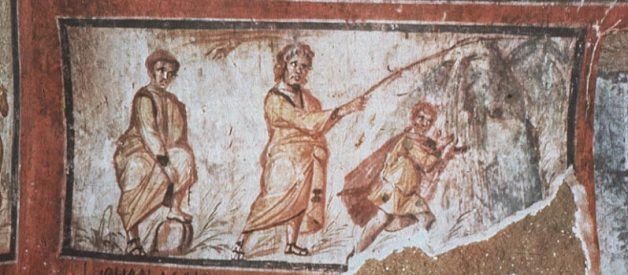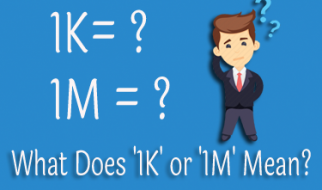Beginner?s overview to the history of styles in Western art
 Camille Monet on a Garden Bench (1873) by Claude Monet. Metropolitan Museum of Art. Source Wikimedia Commons
Camille Monet on a Garden Bench (1873) by Claude Monet. Metropolitan Museum of Art. Source Wikimedia Commons
When I first began learning about the history of Western art, I remember I wanted to understand one thing above all. I wanted to know the timeline. In other words, the grand story of one-style-followed-by-the next.
The first style of art I was ever aware of was Impressionism. I had a vague sense that Impressionism was a French movement and that its artists painted light-filled scenes ?out of doors?. But where it fitted into the story of art, I couldn?t say.
I had the sense that art history was like a relay-race of artists, each passing the baton on from one to the next, building up a cause-and-effect chain of history and development.
As I learnt more, more questions presented themselves: What was ?Baroque? and did it come before or after the Renaissance? Actually, come to think of it, what was the Renaissance? Did ?Classical? refer to classical music or something else altogether? What?s the difference between ?modern art? and ?contemporary art??
It took me a little while to understand that there are both simple and complex answers to these questions.
But the first thing I did, to satisfy my curiosity, was to find a list of art movements and write it out so as to fix it in my memory. It went something like this:
- Medieval art from around 4AD to 1300
- Renaissance 1300?1600
- Baroque 1600?1730
- Rococo 1720?1780
- Neoclassicism 1750?1830
- Romanticism 1780?1880
- Impressionism 1860?1890
- Post-impressionism 1886?1905
- Expressionism 1905?1930
- Cubism 1907?1914
- Futurism 1910?1930
- Art Deco 1909?1939
- Abstract Expressionism 1940s
- Contemporary art 1946 ? present
This is a good list. As a simple framework to find one?s bearings, it?s a pretty good place to start.
So here is that same list, but this time with a bit more detail and an example of a work of art from each movement.
Medieval art
From around 4AD to 1300, this era is a broad category that includes many artistic styles and periods, from early Christian and Byzantine, Anglo-Saxon and Viking, Carolingian, Ottonian, Romanesque, and Gothic. During the medieval period, the various secular arts were unified by the Christian church and the sacred arts associated with it.
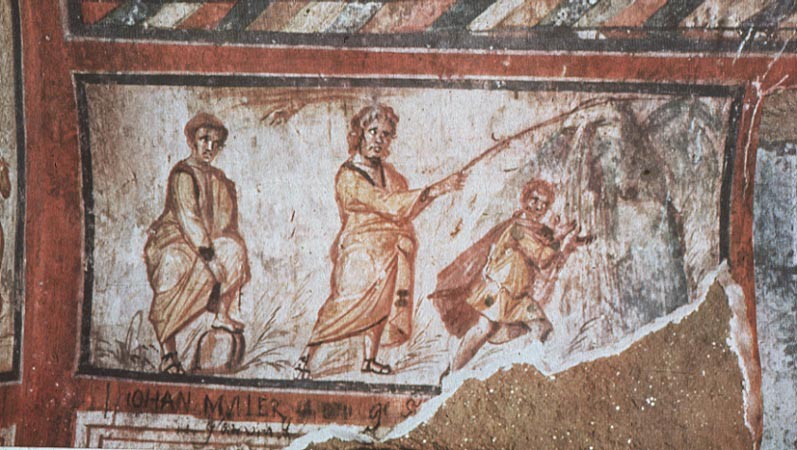 Painting on the wall of an early christian catacomb showing Moses (or Peter?) striking a rock to get water. Source Wikimedia Commons
Painting on the wall of an early christian catacomb showing Moses (or Peter?) striking a rock to get water. Source Wikimedia Commons
Renaissance
Approximately covering the years 1300?1600, the Renaissance saw a blossoming of all of the arts, in painting, sculpture, music and architecture. From Italy to the Netherlands, the Renaissance combined a revival of Classical learning from ancient Greece and Rome with an increased awareness of nature and a more individualistic view of man.
Key artists included:
- Giotto 1266?1337
- Sandro Botticelli c. 1445?1510
- Leonardo da Vinci 1452?1519
- Michelangelo 1475?1564
- Raphael 1483?1520
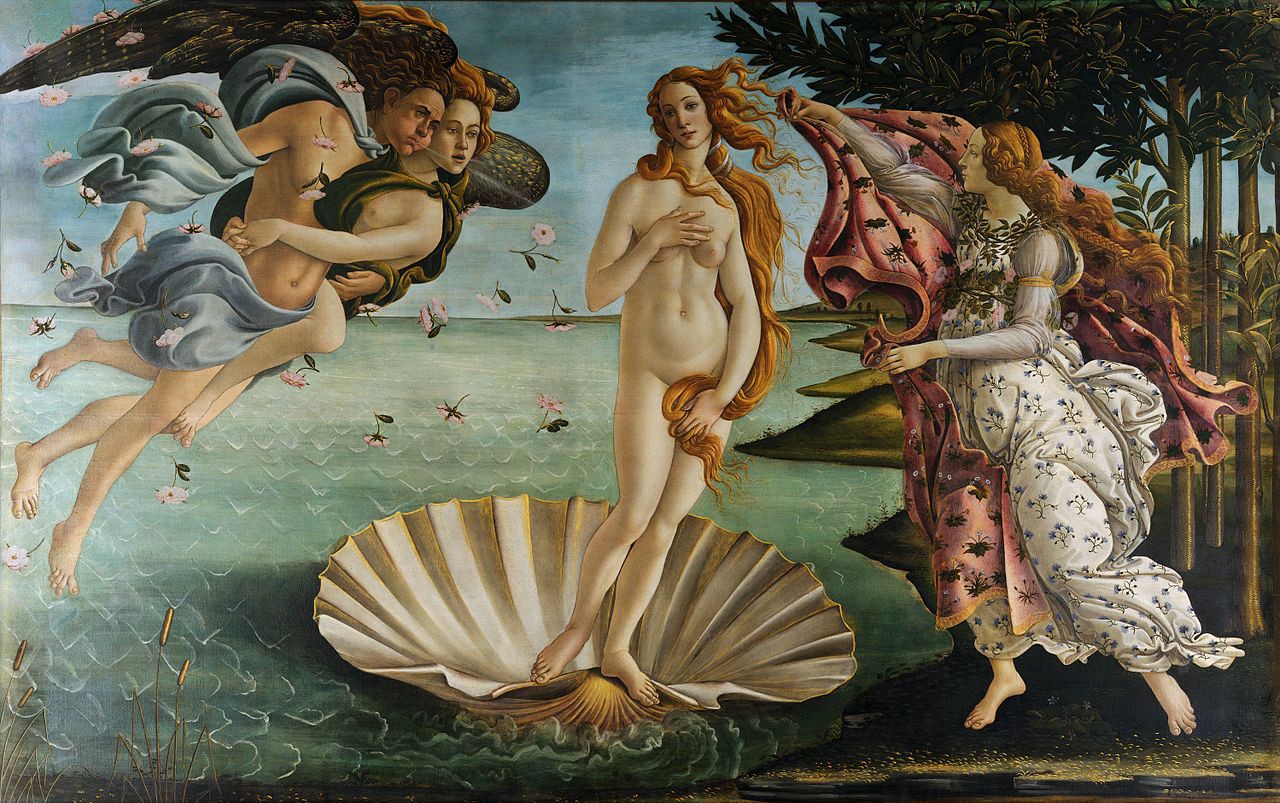 The Birth of Venus (c.1485) by Sandro Botticelli. Uffizi Gallery, Florence. Source Wikimedia Commons
The Birth of Venus (c.1485) by Sandro Botticelli. Uffizi Gallery, Florence. Source Wikimedia Commons
Baroque
Following the Renaissance, the dominate style of art took a more ornate and often extravagant turn. Covering the years between around 1600?1730, art and architecture combined the classical idealism of the Renaissance with a greater emphasis on drama, with artists seeking to evoke emotional states, using strong colour schemes and employing swirling spirals and upward diagonals.
Heavily sponsored by the Catholic church, Baroque art is intimately related to the Counter-Reformation movement.
Key artists included:
- Caravaggio 1571?1610
- Peter Paul Rubens 1577?1640
- Gian Lorenzo Bernini 1598?1680
- Diego Velzquez 1599?1660
 Lot and his Daughters (c. 1614) by Peter Paul Rubens. Private Collection. Source Wikimedia Commons
Lot and his Daughters (c. 1614) by Peter Paul Rubens. Private Collection. Source Wikimedia Commons
Rococo
Roughly spanning 1720?1780, the Rococo was in many ways an extension of the Baroque, pushing the decorative and theatrical aspects of art with an emphasis on asymmetry, curved forms and bright colours.
Originating in France during the reign of Louis XV (1715?1774), it is especially characterised by the combination of painting, sculpture and architecture into a unified scheme, applying to both interior design and the decorative arts.
Key artists included:
- Giovanni Battista Tiepolo 1796?1770
- Franois Boucher 1703?1770
- Jean-Honor Fragonard 1732?1806
 Venus and Amor (1742) by Franois Boucher. Gemldegalerie,Berlin. Source Wikimedia Commons
Venus and Amor (1742) by Franois Boucher. Gemldegalerie,Berlin. Source Wikimedia Commons
Neoclassicism
Neoclassicism was a ?return to order? following the ornamental extravagances of Rococo. Approximately covering 1750?1830, artists and architects sought to revive the symmetry and precision of the Renaissance era, drawing inspiration from the ?classical? art and culture of classical antiquity.
In architecture, buildings took on the look of classical temples from the Greek and Roman periods, with columns and pediments becoming widespread. In the fine arts, Neoclassicism was characterised by a strong sense of inner harmony, clarity and restraint within the picture.
Key artists included:
- Jacques-Louis David 1748?1825
- Antonio Canova 1757?1822
- Jean-Auguste-Dominique Ingres 1780?1867
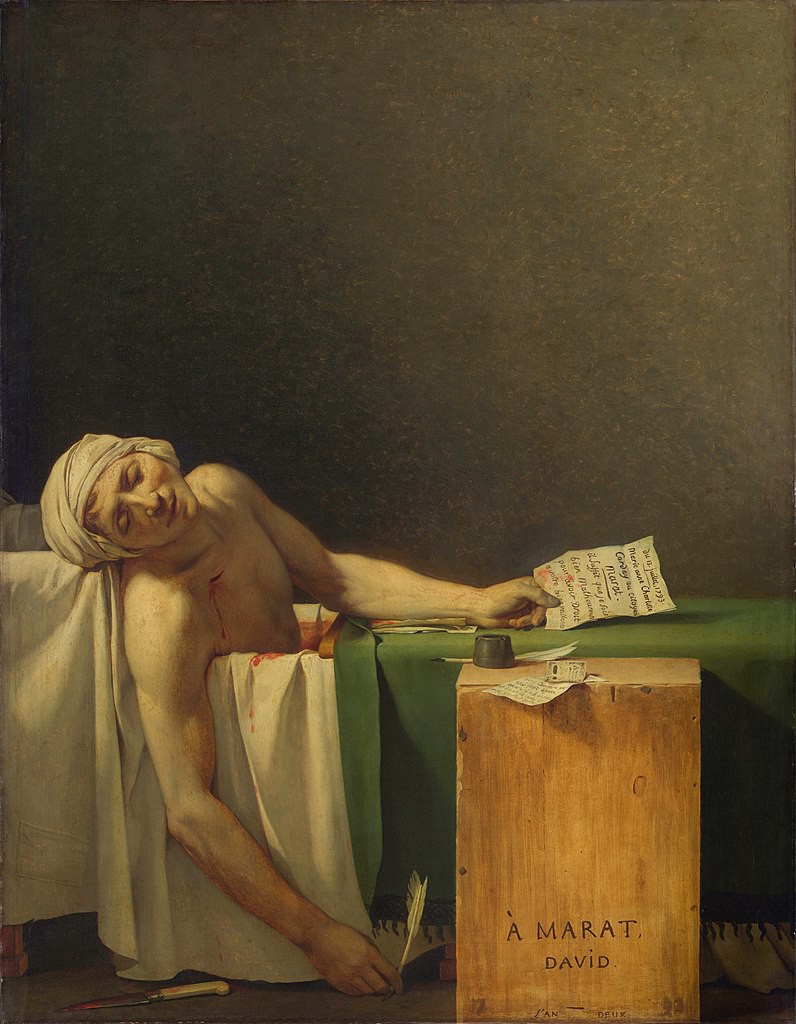 The Death of Marat (1793) by Jacques-Louis David. Royal Museums of Fine Arts of Belgium. Source Wikimedia Commons
The Death of Marat (1793) by Jacques-Louis David. Royal Museums of Fine Arts of Belgium. Source Wikimedia Commons
Romanticism
An important style in the modern history of art, Romanticism saw the emergence of a new conception of art as an expression of the individual artist and an ?authentic? response to the world of sensory experience, especially its vastness and unpredictability of nature.
Covering the era 1780?1880, Romanticism also fostered a preoccupation with the idea of ?genius?, emphasising the notion of personal inspiration and subjective experience in making sense of the world, and as such foregrounded the view of the artist as a brilliant creator.
Key artists included:
- Caspar David Friedrich 1774?1840
- J.M.W. Turner 1775?1851
- John Constable 1776?1837
- Eugne Delacroix 1798?1863
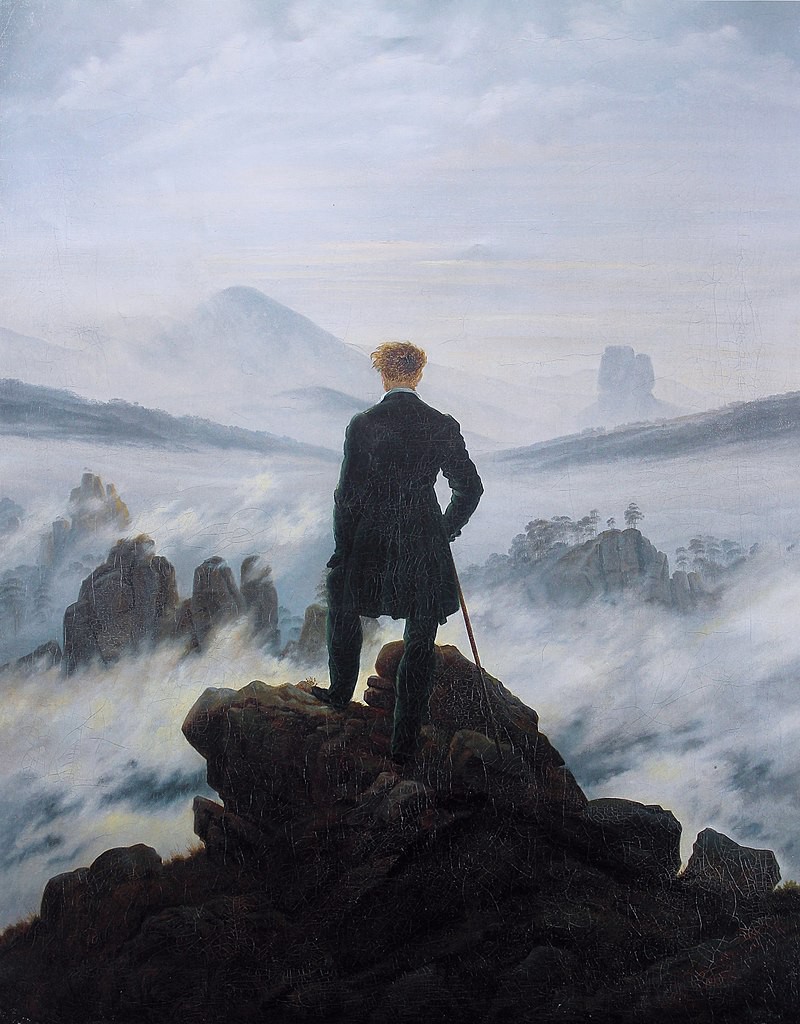 The hiker above the sea of fog (c. 1817) by Caspar David Friedrich. Kunsthalle, Hamburg. Source Wikimedia Commons
The hiker above the sea of fog (c. 1817) by Caspar David Friedrich. Kunsthalle, Hamburg. Source Wikimedia Commons
Impressionism
Spanning roughly 1860?1890 and perhaps the most well-known of all artistic styles, Impressionism emerged in the second half of the 19th century in Paris as style that responded to the increased pace of urban life.
It was anti-academic is style, characterised by lively brushstrokes and a bright colour palette. Artists took to painting out of doors and spontaneously ? en plein air ? rather than in a studio from sketches. Many impressionist subjects were landscapes and scenes of everyday life, placing attention on the transient effects of sunlight as much as on the subjects themselves.
Key artists included:
- Claude Monet 1840?1926
- Edgar Degas 1834?1917
- Camille Pissarro 1830?1903
- Auguste Renoir 1841?1919
- Paul Cezanne 1839?1906
 Camille Monet on a Garden Bench (1873) by Claude Monet. Metropolitan Museum of Art. Source Wikimedia Commons
Camille Monet on a Garden Bench (1873) by Claude Monet. Metropolitan Museum of Art. Source Wikimedia Commons
Post-impressionism
A mainly French art movement that developed roughly between 1886 and 1905, Post-impressionism was ? arguably ? a natural evolution from Impressionism, with the artists continuing to use vivid colors, a thick brushstrokes and real-life subject matter, but also expressive of their emotional and psychological responses to the world through distorted forms and unnatural colour schemes.
The term was coined in 1910 by the English art critic Roger Fry, and applies less to a close-knit group and more to an array of separate artists who were each inspired by the Impressionists in their own ways.
Key artists included:
- Paul Cezanne 1839?1906
- Vincent van Gogh 1853?1890
- Paul Gauguin 1848? 1903
- George Seurat 1859?1891
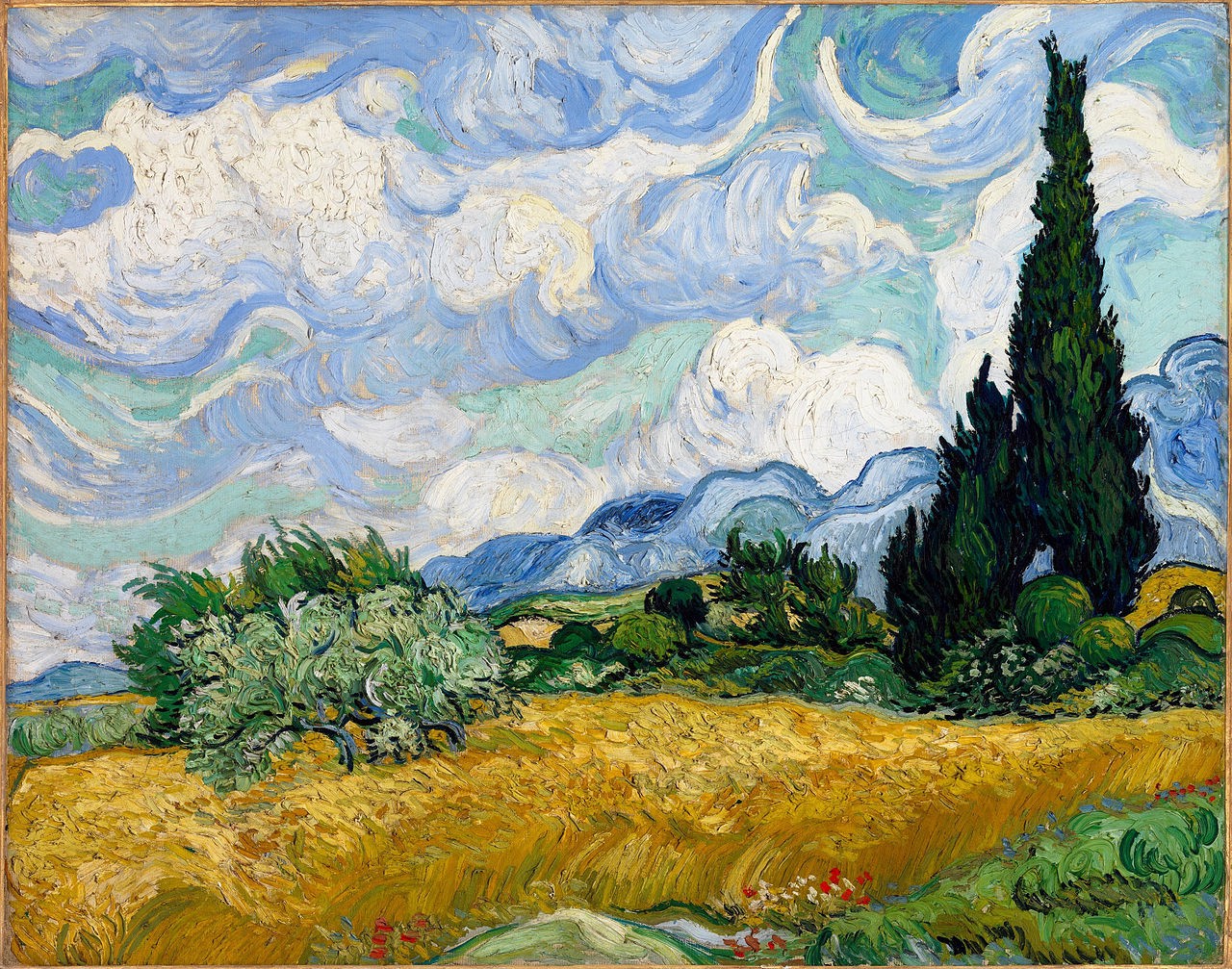 Wheat Field with Cypresses (1889) by Vincent van Gogh. Metropolitan Museum of Art. Source Wikimedia Commons
Wheat Field with Cypresses (1889) by Vincent van Gogh. Metropolitan Museum of Art. Source Wikimedia Commons
Expressionism
Originating in Germany at the beginning of the 20th century, Expressionism followed from the Post-Impressionist, with artists seeking to depict not objective reality but rather a subjective, emotional charged responses to a rapidly changing world.
Expressionist paintings tended to be bold and brisk, roughly hewn, with vivid, sometimes lurid colours, expressing a dual theme of celebration and disfiguration. These artists offered a new version of beauty, one that saw virtue in the free-spirited means of colour and unvarnished texture.
Key artists included:
- Ernst Ludwig Kirchner 1880?1938
- Wassily Kandinsky 1866?1944
- Paul Klee 1878?1940
- Edvard Munch 1863?1944
 Landscape with Factory Chimney (1910) by Wassily Kandinsky. Solomon R. Guggenheim Museum, New York. Source Wikimedia Commons
Landscape with Factory Chimney (1910) by Wassily Kandinsky. Solomon R. Guggenheim Museum, New York. Source Wikimedia Commons
Cubism
Cubism was a highly influential art style that was invented in around 1907?08 by artists Pablo Picasso and Georges Braque. Taking inspiration from the Post-impressionist Paul Cezanne, the artists began painting subjects in fragmented forms in such a way that suggested multiple viewpoints simultaneously.
The characteristics of Cubism are intersecting planes of light and overlapping forms, showing an object from several sides, and from above and below, breaking conventional ideas about visual perception.
Key artists included:
- Pablo Picasso 1881?1973
- Georges Braque 1882?1963
- Juan Gris 1887?1927
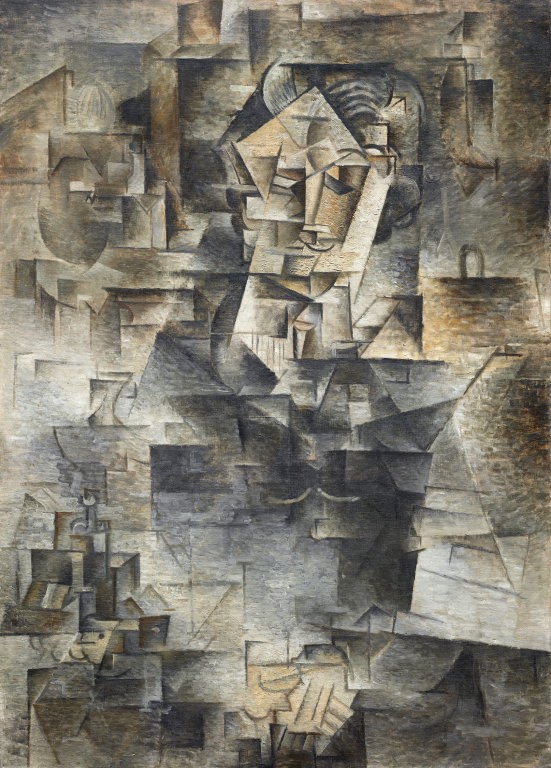 Portrait of Daniel-Henry Kahnweiler, 1910, by Pablo Picasso. Oil on canvas, Art Institute of Chicago. Source Wikipedia
Portrait of Daniel-Henry Kahnweiler, 1910, by Pablo Picasso. Oil on canvas, Art Institute of Chicago. Source Wikipedia
Futurism
Spanning the year from 1910?1930, Futurism took its lead from Cubism as a style of painting and sculpture that forwent conventional depictions of reality in favour of fractured forms that expressed the idea of the dynamism, the energy and movement, of modern life.
Occurring mainly in Italy, Futurism had its own peculiar features as an art movement. It celebrated speed, technology, youth and modern objects such as the car and the industrial city.
Key artists included:
- Filippo Tommaso Marinetti 1876?1944
- Giacomo Balla 1871?1958
- Umberto Boccioni 1882?1916
- Gino Severini 1883?1966
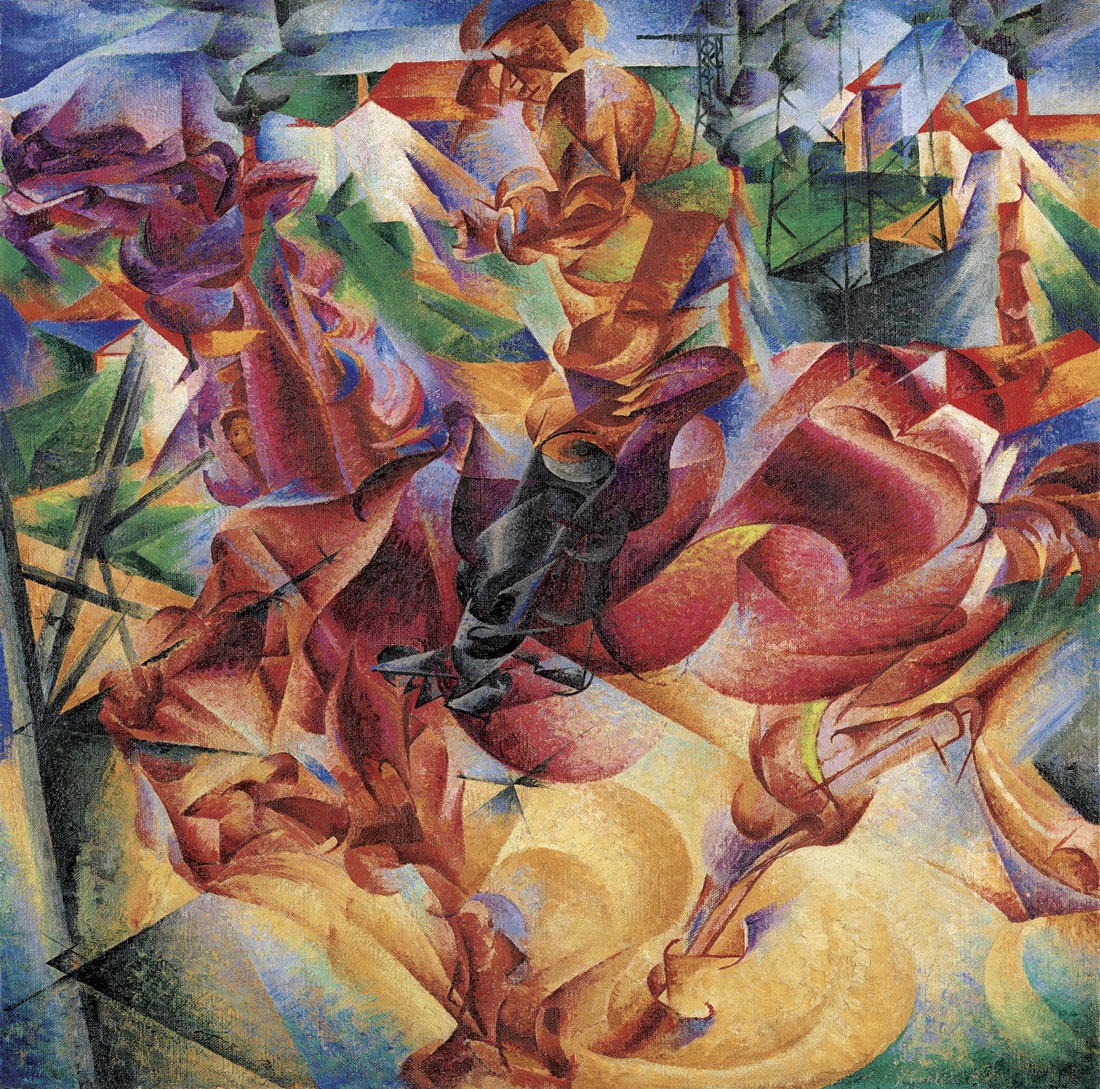 Elasticity (1912) by Umberto Boccioni. Museo del Novecento, Milan. Source Wikimedia Commons
Elasticity (1912) by Umberto Boccioni. Museo del Novecento, Milan. Source Wikimedia Commons
Art Deco
Covering approximately 1909?1939, Art Deco also emphasised the motion and thrill of the modern, mechanised world, this time applied to mass-produced fashion and individually crafted luxury items.
Playful, luxurious and exotic, Art Deco overturned traditional elegance in preference for a highly stylised and geometric style that symbolized wealth and sophistication. Art Deco was influential across fashion, advertising and architecture.
Key artists included:
- Tamara de Lempicka 1898?1980
- Alphonse Mucha 1860?1939
- William Van Alen 1883?1954
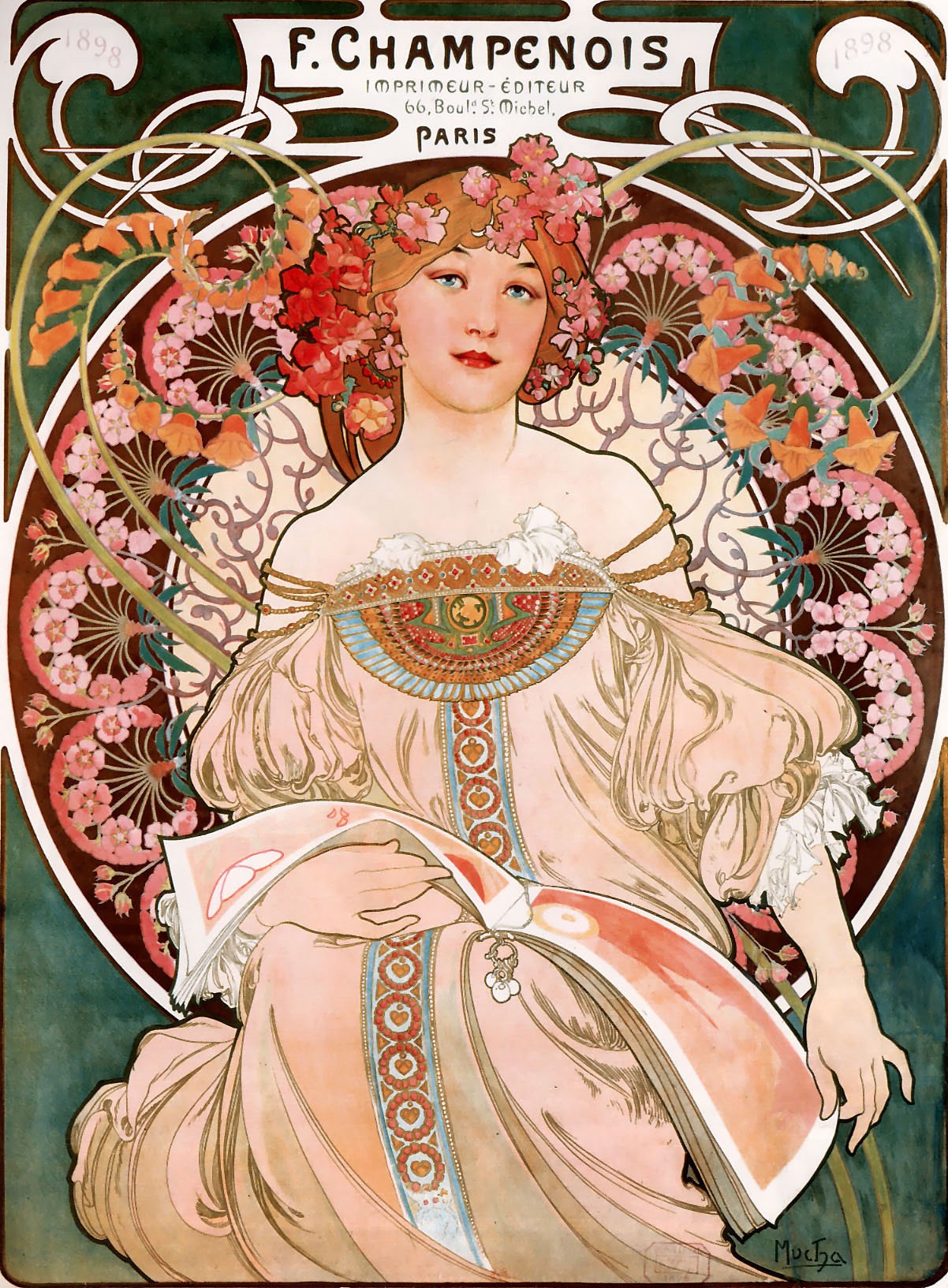 F. Champenois Imprimeur-Editeur (1897) Alphonse Mucha. Private Collection. Source Wikimedia Commons
F. Champenois Imprimeur-Editeur (1897) Alphonse Mucha. Private Collection. Source Wikimedia Commons
Abstract Expressionism
Originating in 1940s America, Abstract Expressionism took its inspiration from European painters working in abstraction, such as Wassily Kandinsky. It tended to reject all recognisably realistic forms and used colour and texture as the primary tool for expression.
Most famous among them is Jackson Pollock, who made many of his paintings by laying the canvas on the floor of his studio and dripping paint in swirls and spirals, creating a chaotic and mesmerising field of visual activity. Other artists used free-flowing, gestural painted brushmarks, producing paintings that were heavily reliant on spontaneity and intuition.
Key artists included:
- Jackson Pollock 1912?1956
- Mark Rothko 1903?1970
- Willem de Kooning 1904?1997
- Barnett Newman 1905?1970
- Lee Krasner 1908?1984
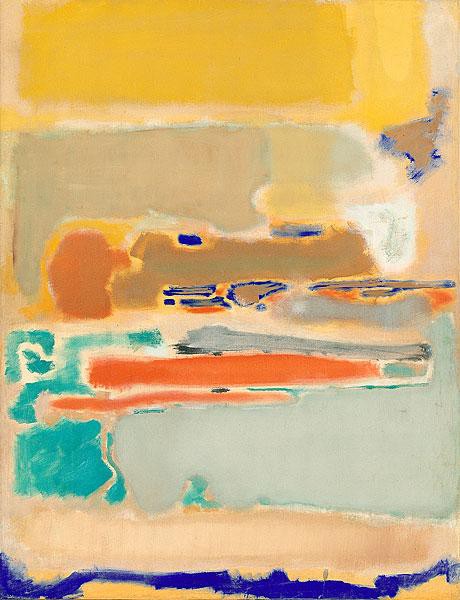 Multiform (1948) by Mark Rothko. National Gallery of Australia (NGA), Canberra, Australia. Source WikiArt
Multiform (1948) by Mark Rothko. National Gallery of Australia (NGA), Canberra, Australia. Source WikiArt
Contemporary art
Contemporary art is really a catch-all term for all art that has come after the Second World War. As such, it encompasses many themes and styles, and takes us up to the present day.
It is impossible to sum up Comtemporary art in just a few lines: anyone who has stepped inside a modern gallery in the last few decades will know that if contemporary art is anything, then it is a place where rules are perpetually broken.
Contemporary art tends to treat everything as open question, including our news, our politicians, our institutions, our culture, and our grand narratives. Change is everywhere about us, so our perspectives must continue to change too. Contemporary art has these ideas at its heart.
Key artists include:
- Cindy Sherman born 1954
- Judy Chicago born 1939
- Damien Hirst born 1965
- Anselm Kiefer born 1945
- Jeff Koons born 1949
- David Hockney born 1937
- Marina Abramovi? born 1946
 Puppy (1992) by Jeff Koons. Source Wikimedia Commons
Puppy (1992) by Jeff Koons. Source Wikimedia Commons
More art history
Art history is a wonderful subject to study, not least because it reveals the creative side of humankind is all its diverse manifestations.
It is also a large subject, and you may have noticed that the above list of styles is far from complete.
For one, it doesn?t include Ancient Classical art from Egypt, Greece or Rome ? all of them enormously important. It also skips over many styles that could fill volumes of analysis, such as Byzantine art or Gothic art. In the modern section, I?ve missed Dada and Pop Art, to name but two.
So here are a few more essays that may help fill in some of the gaps:
How To Visit Art Galleries
Tips on how to get the most from your visit
medium.com
Abstract Art Reconsidered
Pictures of things that don?t exist
medium.com
How To Look At Contemporary Art
Open your mind to the wonderful world of 21st century art
medium.com
The Mystery Of Symbols In Art
Decoding the obscure language of iconography
medium.com

Christopher P Jones writes about culture, art and life.
Sign up to my newsletter for extra insights in art, culture and my writing.
